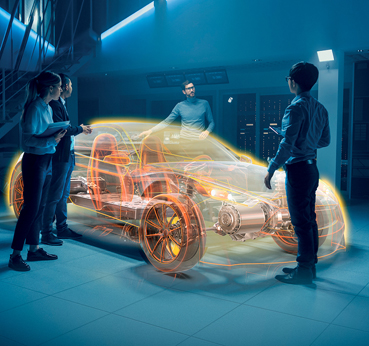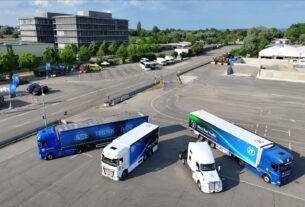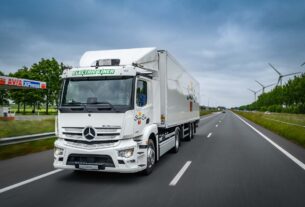EVs are reshaping the transportation industry and beyond, drastically reducing pollution and greenhouse gas emissions, opines Abhijit Sengupta, Senior Director and Head of Business for South East Asia and India, HERE Technologies

In India, two-wheelers are the preferred mode of transport owing to their high fuel efficiency, ease of riding in congested traffic, and affordability when compared to four-wheelers. The ease of mobility of two-wheelers has also fostered the boom in e-commerce during the pandemic –and in turn an expansion of the last-mile ecosystem –as stay-at-home orders increase, creating employment opportunities for drivers. As a result of this demand, there is a strong impetus for manufacturers, regulators and industry players to advance goals for both economic growth and sustainable development through a transition to two and three-wheeler electric vehicles (EVs).
Advancing Electric Micro-Mobility
EVs are reshaping the transportation industry and beyond, drastically reducing pollution and greenhouse gas emissions. Significant investments in infrastructure, vehicle technology and critical car components are already underway. For instance, the Global Environment Facility (UEF) Global Electric Mobility Programme was launched in 2019 to help 27 developing countries – including India – accelerate their shift to zero-emissions electric mobility. At COP 26, India also unveiled its plan for nearly two-thirds of new vehicles to be electric by 2030, including 70 per cent of the country’s vast two-wheeler market.
Efforts like this not only help meet climate change commitments but also fuel the growth of the Indian economy – enabling EV start-ups and established original equipment manufacturers (OEMs) to claim to slice of EV pie in the country. Most recently, it was announced that Ola Electric Mobility, a Bengaluru-based start-up, will get state support to manufacture EV batteries that can store a total of 20 gigawatt-hours of power. However, for two-wheeler EVs to be a long-term sustainable mode of transport, city planners and electricity system developers and operators will need to collaborate on building the right infrastructure for these EVs.Building an Enabling Ecosystem for EVs

One of the largest obstacles in EV adoption – be it two-wheelers or four-wheelers – is matching the demand for electric charging with the supply of EV charging facilities. Riders want to know where the bike charging points are, what the charging duration would be, and how much it would cost to charge their bikes. This is where the government will play a critical role as a catalyst for EV adoption to establish standard EV charging and potentially parking zones for shared mobility. For example, efforts by the Indian government has resulted in the additional installation of more than 670 public EV charging stations between October 2021 and January 2022 in nine Indian cities, namely, Surat, Pune, Ahmedabad, Bengaluru, Hyderabad, Delhi, Kolkata, Mumbai and Chennai.
These cities currently account for close to 60 per cent of India’s public EV chargers, with more to come to encourage the adoption of EVs in India. However, implementing green mobility options alone does not make transportation sustainable in a city. It needs to go hand in hand with strategic urban planning and location intelligence can help make this process a lot easier. For instance, data created by private passenger vehicles, on-demand ride-hailing services, and public transit can provide city planners with the details needed to customise frequency, streamline scheduling, implement new and greener alternatives like car and bicycle-sharing or shuttle services, while helping to reduce traffic.
In the case of EV adoption, location technology can enable riders to find out how far they can go from one place to another with the type of EVs they have. This is done so by taking into account the actual distance travelled on known roads and compiled and matched against the actual range the EV can go. Such data is crucial for city planners and electricity system operators to decide where to place EV charging stations throughout the city so that riders can better plan their travel routes and reduce anxieties about running out of charge.
Safety and Sustainability
Getting used to cycling or riding a scooter in a major urban centre can be difficult with major hazards to avoid and safety measures to consider. Thankfully, location technology is helping riders avoid everything from construction, traffic and potholes to oblivious drivers and distracted pedestrians. Riders are not the only ones who will benefit from location technology-powered two-wheelers. Businesses are also taking advantage of micro-mobility options like bikes, scooters, and their electric versions to complete the last mile.

For instance, Hero Electric, one of India’s leading electric scooter companies, has announced that it will deliver 4,000 vehicles by FY 2022-23 in partnership with the last-mile delivery segment in the country to go electric. As a result, by marrying green mobility options with location intelligence, cities can combat traffic congestion and pollution-induced issues, as well as help businesses bridge the last mile and provide residents with accessible, affordable, and emission-free commuting options.
Scooting Ahead – What’s Next?
The pandemic has initiated a powerful shift towards a more flexible and sustainable transport system. According to McKinsey and Company, 80 per cent of the world’s vehicle sales are expected to be electric by 2050. From growing regulatory moves, including phasing out sales of new internal combustion engine (ICE) vehicles, rising fuel prices, changing consumer behaviour, and ongoing improvements in battery and charging technology, we can expect the two-wheeler industry to be increasingly electric. As we continue to adapt urban mobility options to ever-shifting pandemic regulations and updated environmental targets, two-wheelers and small mobility electric vehicles will become a key mode of transport and location intelligence will continue to play a critical role in increasing the value of two-wheelers for riders.





